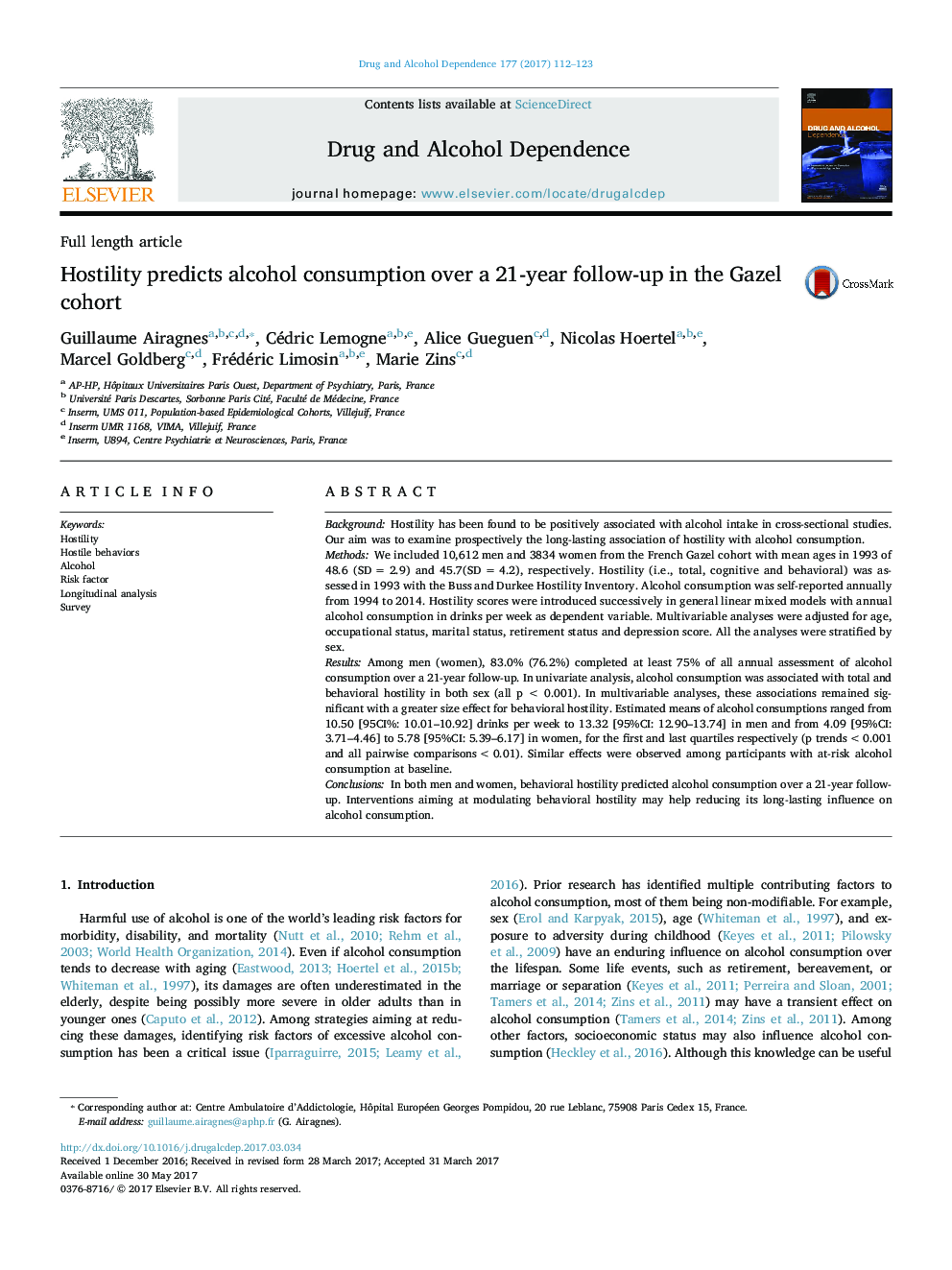| کد مقاله | کد نشریه | سال انتشار | مقاله انگلیسی | نسخه تمام متن |
|---|---|---|---|---|
| 5120031 | 1486114 | 2017 | 12 صفحه PDF | دانلود رایگان |
- In both sexes, hostility could predict alcohol consumption twenty years later.
- Association with alcohol consumption is mainly driven by behavioral hostility.
- At-risk alcohol consumers may benefit from interventions to reduce their hostility.
BackgroundHostility has been found to be positively associated with alcohol intake in cross-sectional studies. Our aim was to examine prospectively the long-lasting association of hostility with alcohol consumption.MethodsWe included 10,612 men and 3834 women from the French Gazel cohort with mean ages in 1993 of 48.6 (SD = 2.9) and 45.7(SD = 4.2), respectively. Hostility (i.e., total, cognitive and behavioral) was assessed in 1993 with the Buss and Durkee Hostility Inventory. Alcohol consumption was self-reported annually from 1994 to 2014. Hostility scores were introduced successively in general linear mixed models with annual alcohol consumption in drinks per week as dependent variable. Multivariable analyses were adjusted for age, occupational status, marital status, retirement status and depression score. All the analyses were stratified by sex.ResultsAmong men (women), 83.0% (76.2%) completed at least 75% of all annual assessment of alcohol consumption over a 21-year follow-up. In univariate analysis, alcohol consumption was associated with total and behavioral hostility in both sex (all p < 0.001). In multivariable analyses, these associations remained significant with a greater size effect for behavioral hostility. Estimated means of alcohol consumptions ranged from 10.50 [95CI%: 10.01-10.92] drinks per week to 13.32 [95%CI: 12.90-13.74] in men and from 4.09 [95%CI: 3.71-4.46] to 5.78 [95%CI: 5.39-6.17] in women, for the first and last quartiles respectively (p trends<0.001 and all pairwise comparisons<0.01). Similar effects were observed among participants with at-risk alcohol consumption at baseline.ConclusionsIn both men and women, behavioral hostility predicted alcohol consumption over a 21-year follow-up. Interventions aiming at modulating behavioral hostility may help reducing its long-lasting influence on alcohol consumption.
Journal: Drug and Alcohol Dependence - Volume 177, 1 August 2017, Pages 112-123
